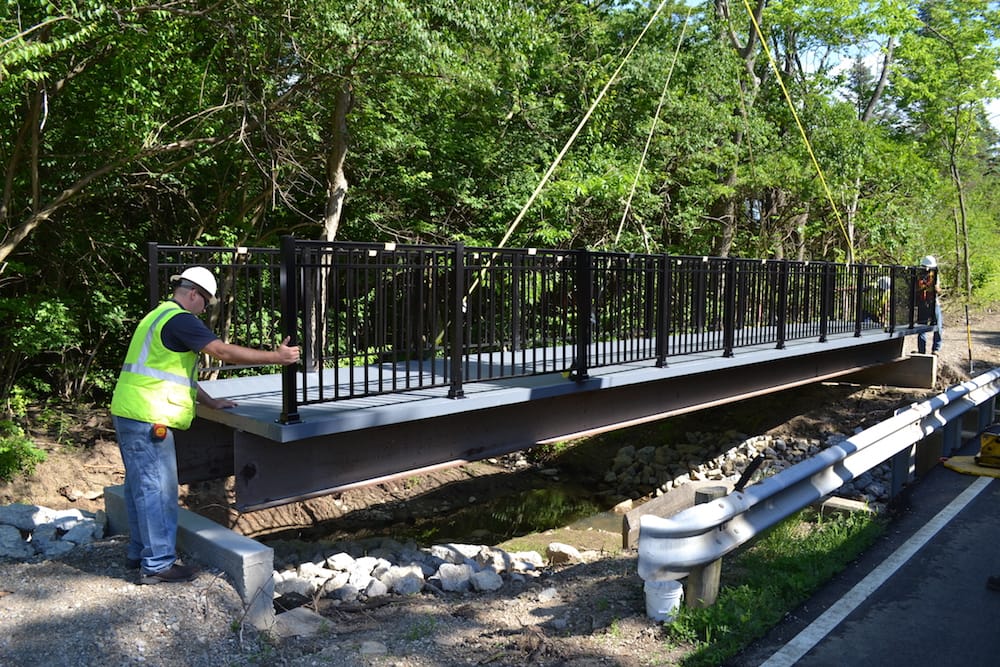Many parks, municipalities, golf courses, and other land developments decide to install pedestrian bridges for safety, improved access, crossing waterways, and other reasons. But often what’s missing is in-house expertise around designing and building the best bridge for the application.
It’s challenging to find the right combination of material, design, and cost with limited first-hand experience. For this reason, pedestrian bridge projects are often outsourced to engineering firms and contractors.
When you’ve decided to start a pedestrian bridge project, deciding whom to hire for the design, fabrication, and installation work is critical to the success of the finished structure. There are two primary paths to take: design-bid-build or design-build. We’ll take a closer look at both in this blog.
The Design-Bid-Build Process
In the design-bid-build process you contract with an engineering firm to complete the design of the bridge. Then you are responsible for gathering bids on the design from several contractors or installers and vetting them to select the best team for the job. It is common for an installation contractor to purchase the bridge or its components from another company and install it on site.
Because it is a multi-step process and involves working with several companies, this may not be the most efficient choice for every situation. Keep these points in mind when selecting vendors:
The engineering vendor you select should be able to provide relevant design examples of comparable projects they have worked on. One red flag to watch for is if all of their examples are of a significantly different scale than your project. It’s also important that the individual engineer(s) named in the references is the same person/people you will be working with.
Pricing can vary greatly between projects and vendors, even for similar services. Try to obtain at least two proposals, especially if you do not have prior experience working with an engineering vendor.
Bridge contractors should have direct experience sourcing and installing similar types of bridges to what your project specifies. Request references from previous customers and be sure to contact them about their experience with the contractor. If possible, visit some of their previous job sites in person.
Plan to obtain multiple bids to compare, and remember the lowest bidder is not always the best option.
The Design-Build Process
In the design-build construction process, you contract with a single company to design, fabricate, and install the bridge. This process can be very cost-effective because it eliminates the extra steps of bidding and vetting both engineering and installation vendors. Always ensure your design-build contractor is qualified and experienced with the type of pedestrian bridge you need.
A design-build contractor should have a professional engineer on staff who is responsible for the bridge design. Unlike a subcontracted engineer, an in-house engineer is familiar with the contractor’s regular work and is therefore able to tailor the bridge project to the contractor’s strengths and efficiencies.
As with any contractor vetting process, be sure to review past projects that are similar in scope to yours, and request (and follow up with!) references.
Finally, defining as many requirements for your bridge as possible in the contract goes a long way toward avoiding unexpected costs as the project progresses. Examples of what to include estimated bridge span, open width, bridge type, expected warranty, and specific materials.
There’s usually more than one way to build a bridge, but an informed customer always makes better decisions. The experienced engineers and builders at Axcess, LLC are ready to help your project become reality so please get in touch!


